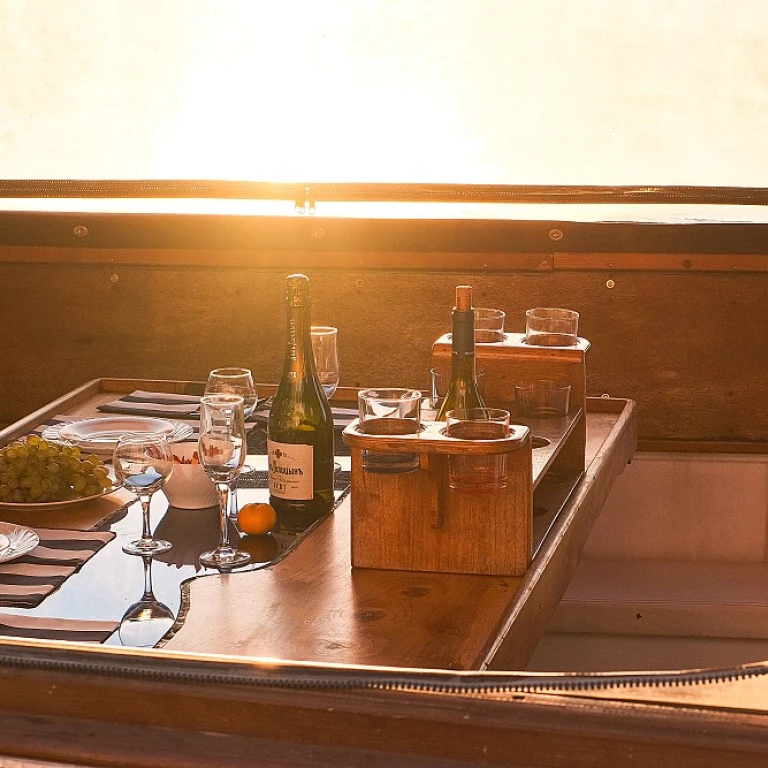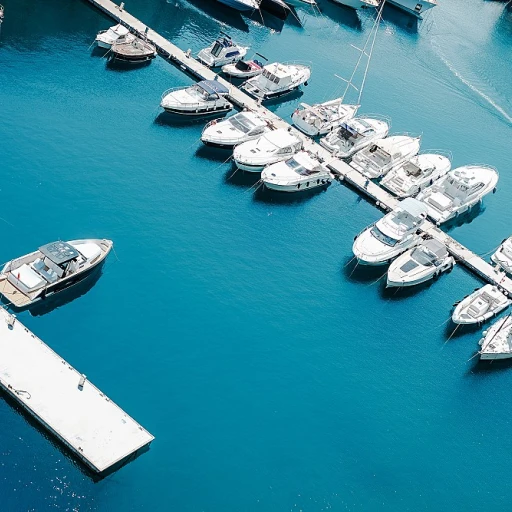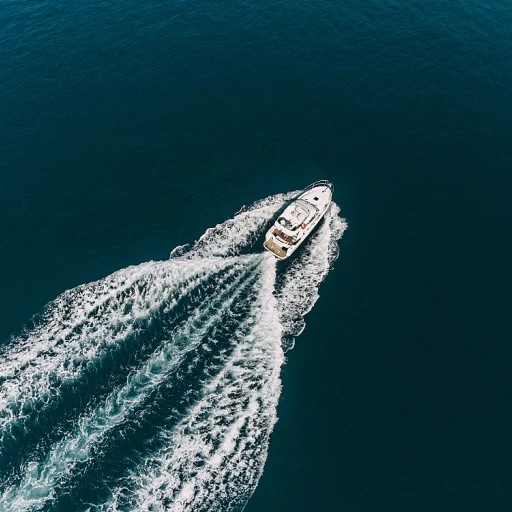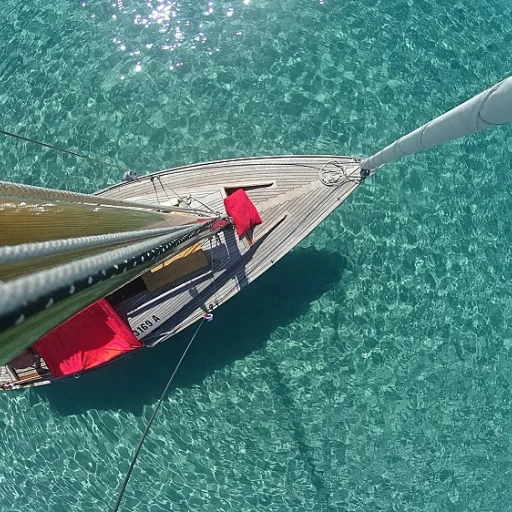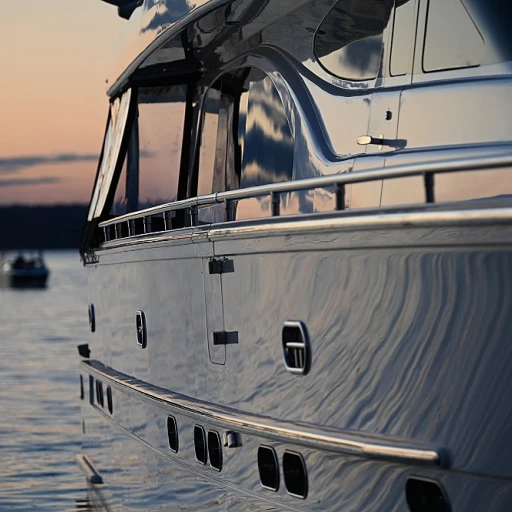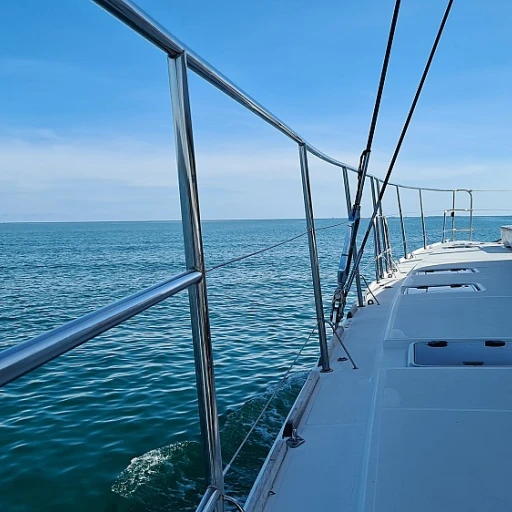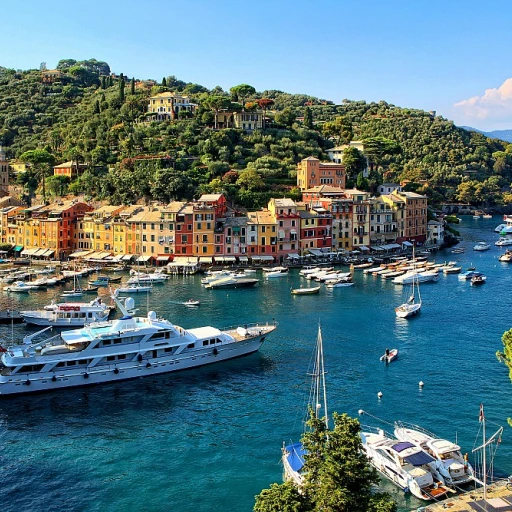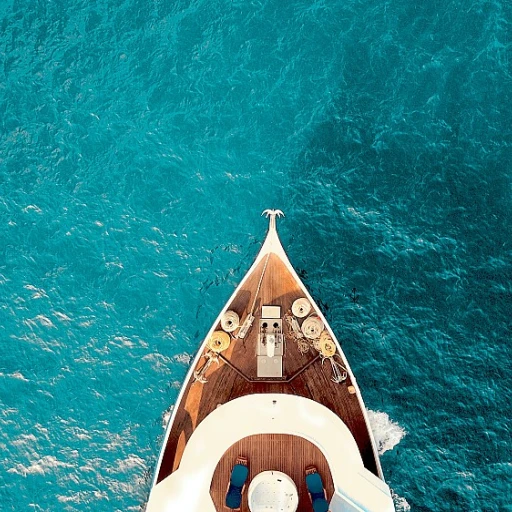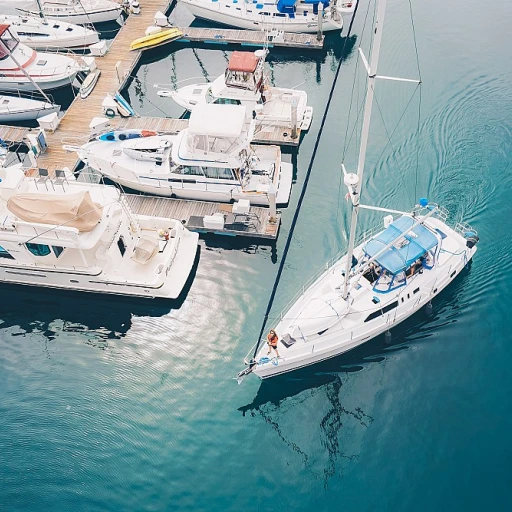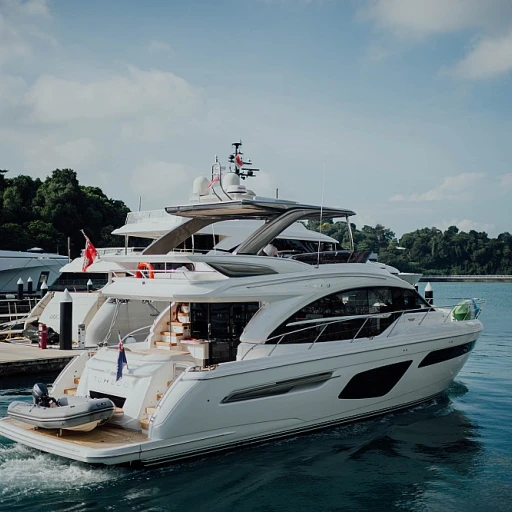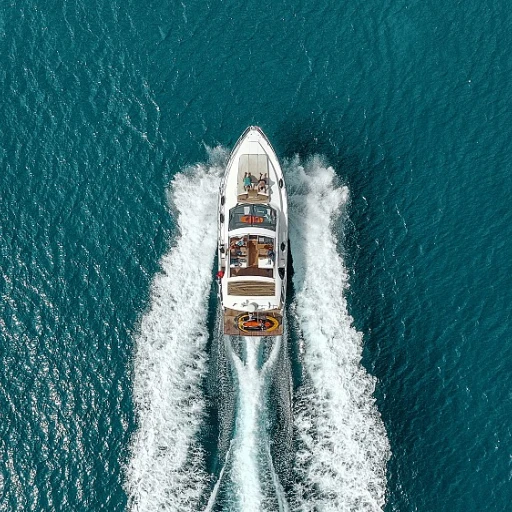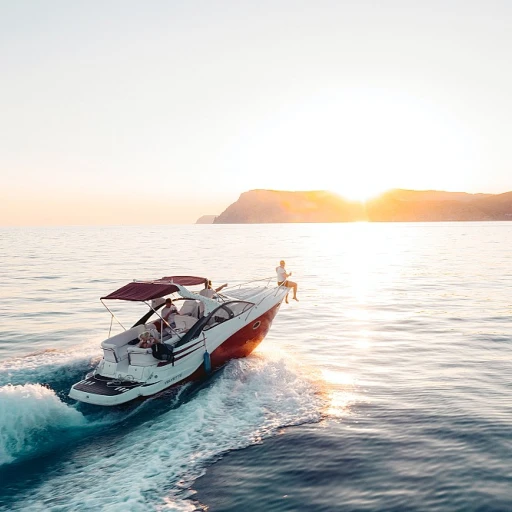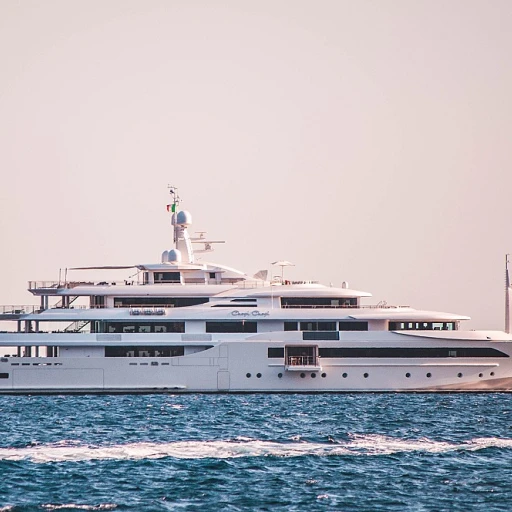
The Evolution of Glass in Yacht Design
Tracing the Journey of Glass in Nautical Craftsmanship
In recent decades, modern yacht design has eagerly embraced the advent of glass as a cornerstone material. Once primarily utilized for smaller features and windows, glass is now at the forefront of innovative yacht design, captivating designers and enthusiasts alike. This transition marks a significant leap from traditional wooden or metal structures to the sleek, almost futuristic embrace of glass elements. The integration of glass has not been solely cosmetic. The adaptability and versatility of glass have allowed yacht builders to explore new possibilities in vessel layouts. With glass, designers can introduce striking, open spaces that seamlessly merge interiors with the vastness of the seas. This trend is not only a testament to aesthetic grandeur but also to the paramount importance placed on enhancing on-board experiences. In particular, the incorporation of tempered glass as a core material in yacht structures opens new vistas for both function and form. From the gleaming decks to luxurious bathrooms, glass elements add a unique touch. The vessel bathroom features options like sleek glass sinks or vessel glass, which come in an array of designs – from rectangular glass to elegant, free-standing vessels that redefine marine luxury. A single piece of glass can inspire an entire design language within a yacht's architecture. For instance, the crystal clear transparency found in some high-end models showcases the endless horizons like never before. Comparatively speaking, offerings like the Murano, with its characteristic deep blue or gold hues, add an exquisite touch, elevating the aesthetic value of these floating marvels. However, as glass takes on a more prominent role in marine design, the challenges in glass vessel construction also grow. The balance between artistic appeal and structural integrity must not be overlooked. Designers work diligently to ensure each glass panel withstands the harsh marine environment without compromising safety or comfort. The evolution of glass in yachting is a fascinating expedition of innovation and creativity, forever altering the course of nautical architecture. As glass vessels continue to garner interest, yacht owners and designers alike are eager to see what future trends will emerge, further pushing the boundaries of design and luxury on the crystal canvases of the modern seas.Benefits of Glass Vessels
The Advantages of Transparent Elegance
Modern yachting boasts an array of innovations, yet glass vessels stand out with their unparalleled charm and utility. The allure of crystal-clear structures crafted from tempered glass is reshaping the way we perceive luxury on water. These contemporary designs captivate with their aesthetic appeal, offering distinct advantages. One of the core benefits of glass vessels is their unrivaled transparency. This allows for immersive, unobstructed views, transforming a regular day on the water into an unforgettable experience. Imagine lounging in a snug, opulent interior surrounded by breathtaking sights, a feat only achieved by integrating clear, durable glass. In the realm of interiors, distinct design choices emerge. Think of glass sinks that reflect both form and function. Popular choices include vessel sinks crafted from Murano and tempered glass, offering a pristine, crystal-clear appearance. These sinks can range from rectangular glass options to vibrant color variations like blue silver or black glass, seamlessly integrated into the vessel bathroom's ambiance. These innovative vessels also add a unique dimension to yacht design. Unlike traditional materials, glass allows natural light to flood interiors, enhancing color palettes and accentuating decor elements like blue and gold accents. The play between light and glass creates inviting environments that elevate any yacht journey. By examining glass structures' eco-friendly characteristics, owners can save and compare alternatives that meet the rising demand for sustainable practices. As we learn more about these advantages, it's clear why they're becoming a best seller in the yachting industry. The integration of glass is not just skin-deep; it's about creating spaces that are as functional as they are beautiful. For yacht interiors that blend sophistication with comfort, incorporating the elegance of vessel glass is an indisputable triumph. To delve deeper into yacht interior design ideas, exploring the art of yacht interiors uncovers further innovations and trends.Challenges in Glass Vessel Construction
The Intricacies of Glass Vessel Construction
In the world of yachting, where innovation meets craftsmanship, constructing glass vessels presents a unique set of challenges. While the allure of glass, admired for its crystal clear beauty and contemporary aesthetic, is undeniable, the path to achieving a fully functional glass yacht demands precision and expertise. Crafting these vessels involves the use of tempered glass, renowned for its strength and durability. Yet, even with these robust materials, ensuring the structural integrity of a vessel that faces the whims of the sea requires meticulous planning and execution. The design must account for load distribution, potential impact points, and not least—maintain the luxurious experience expected in high-end yachting. The choice of glass—whether clear, blue silver, or even the intricate patterns of Murano—can significantly impact not only the vessel's style but its performance. Comparatively, each color and pattern varies in terms of weight and how they filter light into the interiors, such as bathrooms featuring sleek rectangular glass vessel sinks, adding an element of elegance that harmonizes with the overall design. Single-panel installations are favored in areas where visibility and aesthetics must save space and add a modern touch. This is also true for bathroom sinks and fixtures, where vessel sinks continue to be a best seller, offering a clean look while maintaining the benefit of being ADA compliant. Furthermore, the intricate process of adding layers to achieve a safe yet visually captivating glass vessel demands not only advanced manufacturing techniques but also collaboration with skilled artisans. This adds another dimension to the already expensive yacht-building process, influencing the sale price of such vessels, yet justifying it with unmatched beauty and functionality. Building these aquatic marvels serves as a comparison to constructing iconic structures on land where architectural prowess meets aesthetic precision. Eventually, overcoming these challenges is not merely about addressing current practical issues but also learning to pave the path for future innovations in glass vessel design. For enthusiasts eager to explore contemporary yachting with elegance and resilience, the allure of Mangusta yachts sets a benchmark in this evolutionary narrative.Environmental Impact of Glass Vessels
Environmental Considerations of Glass in Yachting
The integration of glass into yacht design, while visually stunning, brings with it a set of environmental considerations that are crucial for the industry to address. As we delve into the benefits and challenges of glass vessels, it's essential to weigh their ecological footprint.
Firstly, the production of glass, especially the specialized types used in yacht construction like tempered glass, requires significant energy. This energy consumption can contribute to carbon emissions unless offset by renewable energy sources. However, the durability and longevity of glass can save resources in the long run, as these materials often outlast traditional alternatives.
Moreover, the recyclability of glass is a notable advantage. Unlike some composite materials, glass can be recycled without losing quality, making it a more sustainable choice if managed properly. The challenge lies in ensuring that the recycling processes are in place and accessible for yacht manufacturers and owners.
Another aspect to consider is the impact of glass on the yacht's energy efficiency. Glass vessels can enhance natural light penetration, reducing the need for artificial lighting during the day. This can lead to energy savings, particularly in the context of luxury yachts where energy consumption is typically high. However, the thermal properties of glass must be carefully managed to prevent excessive heat gain, which could increase the demand for air conditioning systems.
In terms of aesthetics, glass vessels offer a crystal clear view of the surroundings, connecting passengers with the marine environment. This can foster a greater appreciation for the ocean and potentially inspire more environmentally conscious behaviors among yacht owners and guests.
Finally, the choice of materials and finishes, such as using eco-friendly options like native trails or recycled glass sinks in the yacht's interior, can further reduce the environmental impact. By comparing different materials and opting for sustainable options, yacht designers can contribute to a more eco-friendly industry.
In conclusion, while glass vessels present certain environmental challenges, they also offer opportunities for sustainability. By carefully considering material choices and energy efficiency, the yacht industry can continue to innovate while minimizing its ecological footprint.
Case Studies of Iconic Glass Vessels
Exploring Renowned Examples of Glass Craftsmanship
Glass vessels in modern yachting have caught the eye of both enthusiasts and experts. This notable trend is reflected in several exemplary cases that showcase the elegance and practical use of glass in vessel construction.
In recent years, yachts have increasingly adopted glass as a fundamental aesthetic and functional component. Some of these vessels stand out for their innovative use of glass, marking milestones in the design of luxury watercraft.
The marriage of strength and aesthetic allure is evident in the use of tempered glass for structural elements. This material offers both durability and unparalleled visibility, allowing travelers to immerse in their surroundings. Vessels utilizing such materials feature a crystal clear appearance, enhancing the luxury experience.
The external design isn't the only beneficiary of glass's incorporation. Inside, glass sinks and tempered glass accents add modernity and sophistication to yacht interiors. From beautiful vessel sinks that diversify the selection with options like the murano or rectangular glass versions, to elegant touches in fixtures, glass extends its influence throughout the yacht.
Colors such as silver white, black glass, and blue reflect a wide palette that partners well with the clear glass, adding layers of depth to the aesthetic. This colorful range provides owners with an opportunity to customize their experience, aligning with their personal styles.
As we learn more about these vessels, their story is intertwined with a rich tradition of craftsmanship and innovative advancements in yacht design. Looking forward, the sale of such unique vessels continues to add new items that captivate the market, all while maintaining their eco-friendly promises as discussed in prior sections. Each glass bathroom sink or fixture is a testament to blending function with style effortlessly, a theme carried meticulously across these floating works of art.
Future Trends in Glass Vessel Design
Innovative Designs and Advanced Features
The future of yacht design is poised to embrace the expansive capabilities that glass vessels offer. Designers are increasingly utilizing glass to create unique, aesthetic structures that redefine luxury and modernity in yachting. The use of glass in vessel construction is not just for windows or windshields anymore. It has expanded to incorporate expansive glass walls, floors, and even breathtaking glass staircases inside yachts.An exciting future trend includes the integration of crystal clear and tempered glass elements throughout the yacht. These materials introduce a new dimension of luxury, making interiors feel larger and airier, comparable to the free expanse of the ocean. This, coupled with the use of glass vessel sinks and bathroom sinks, continues to transform yacht interiors into sophisticated, lavish havens.
Technological Innovations
As yacht enthusiasts look to save on energy consumption, innovations in glass manufacturing now allow for the incorporation of solar cells within glass panels. This advancement not only saves energy but also contributes to the environmental conservation efforts, an ever-growing need in the modern-day yachting world. It's not uncommon to see vessel bathroom spaces equipped with glass sinks made from materials like native trails or murano glass, known for their durability and artistic appeal.The glass surface of vessels can also be treated to ensure privacy while allowing natural light to illuminate the interiors. The same technology is being adapted into the design of vessel sinks, allowing owners to add endearing colours like blue silver, black glass, or even silver white to their bathrooms, providing a modern aesthetic.
The Emergence of Smart Yachts
Glass technology combined with automation is leading to the advent of 'smart' yachts. These vessels use advanced electronics to control everything from lighting to temperature regulation, all enhanced by the minimalistic and sleek aesthetics of glass. The growing popularity of smart homes has penetrated the yachting industry, with vessel glass playing an integral role.Glass vessel designs have embraced both form and function, offering not only beauty but safety as well. These materials are comparable to ADA compliant standards, which is important for ensuring that those with disabilities can enjoy the same luxury as others. The evolution of vessel sinks, like those available for single sale, often incorporates ergonomic designs while maximizing efficiency.
As these technologies and design innovations continue to evolve, it is clear that glass vessels will persistently define the future of luxurious yachting, offering a unique blend of beauty, environmental responsibility, and cutting-edge technology.

